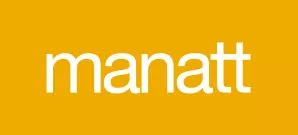- with readers working within the Business & Consumer Services and Pharmaceuticals & BioTech industries
- within Real Estate and Construction and Tax topic(s)
In Lubby Holdings LLC v. Chung,1 the Federal Circuit held corporate officers and employees who actively assist with their corporation's infringement may be personally liable for inducing infringement even without any piercing of the corporate veil. The court also limited damages to infringement occurring only after the complaint was filed because the patent owner failed to properly mark its products with the patent number and failed to properly notify the infringer under the patent marking statute.
Henry Chung appealed the judgment determining he infringed U.S. Patent No. 9,750,284 ('284 patent) and granting damages. Lubby Holdings LLC owned the '284 patent, titled "Personal Vaporizer," relating to personal vaporizers that reduce leaking. Vaporous Technologies, Inc., was a nonexclusive licensee of the '284 patent. Lubby Holdings and Vaporous Technologies (together, Lubby) sued Mr. Chung for infringement of the '284 patent.
Mr. Chung unsuccessfully moved for judgment as a matter of law as to damages, contending that Lubby did not prove that it satisfied 35 U.S.C. § 287's marking requirement. The jury found Mr. Chung personally liable for direct infringement of the '284 patent.
Mr. Chung appealed, and the Federal Circuit affirmed. Mr. Chung asserted that there was no evidence to maintain the jury's determination that he directly infringed the '284 patent. The court disagreed, however, and noted that there was evidence to show that Mr. Chung made, offered to sell and sold personal vaporizer devices that infringed the '284 patent. For example, Mr. Chung testified at trial that he sold the accused products through his company.
Mr. Chung contended, however, that he could not have infringed as a result of actions that he performed for his company, Esquire Distribution Inc., unless Lubby was able to pierce the corporate veil, which Lubby provided no evidence to support. The Federal Circuit disagreed because "that is not the standard."2 According to the court, "corporate officers can be personally liable for their own acts of infringement, even if those acts were committed in their corporate capacity."3 In addition, the court said, "the 'corporate veil' [only] shields a company's officers from personal liability for direct infringement that the officers commit in the name of the corporation, unless the corporation is the officers' 'alter ego.'"4 Rather, veil-piercing standards do not control the distinct issue of direct liability for one's own unlawful or infringing actions, the court said.5 The court reasoned:
Mr. Chung also contended that the damages decision should be reversed because there is no evidence that Lubby observed the marking and notice requirements under 35 U.S.C. § 287. Section 287(a) states that a patentee who makes or sells a patented article must mark the patented article or alert infringers of patent infringement to receive damages.7 Failure to mark the articles results in the patent owner not being "entitled to damages before the date of actual notice," the court said.8
Lubby asserted that Mr. Chung did not point to specific products that he alleged were sold unmarked. The court disagreed and observed that Mr. Chung did identify a specific product, i.e., the J-Pen Starter Kit product on Lubby's website, that did not include a patent number. Therefore, the court held that Lubby could only obtain damages after Mr. Chung was provided actual notice under Section 287.
The court noted that Lubby showed that Mr. Chung was in fact notified of patent infringement as of the filing of the lawsuit. Lubby contended, however, that Mr. Chung had actual notice before the filing of the lawsuit since he admitted that he had notice of the issuance of the '284 patent. The Federal Circuit disagreed and held "Mr. Chung's admission that he had notice that the '284 patent issued does not equate to actual notice under § 287."9 Section 287(a) requires that the notice be of infringement, not simply notice of the existence of the patent or ownership, the court explained.10
Lubby further contended that since Mr. Chung was aware of the '284 patent and of his own infringement prior to the filing of the lawsuit, it should be able to recover damages from previous sales. The court rejected this argument as well and made clear that "the actual notice requirement of § 287(a) is satisfied when the recipient is informed of the identity of the patent and the activity that is believed to be an infringement, accompanied by a proposal to abate the infringement, whether by license or otherwise."11 It is irrelevant under Section 287, the court said, "whether the defendant knew of the patent or knew of his own infringement."12
The court reasoned that the evidence failed to demonstrate that Lubby accused Mr. Chung of infringing a specific product or device. Therefore, the court ruled damages could only be assessed against Mr. Chung personally for infringing products sold after the lawsuit was filed.
Accordingly, the court agreed with the jury's verdict that Mr. Chung directly infringed the '284 patent and was personally liable but reversed the district court and remanded to assess the number of sales made by Mr. Chung after the complaint was filed because Lubby failed to comply with the marking statute.
Practice Tips:
The Lubby Holdings LLC v. Chung decision confirms that employees and officers can be liable for infringement. Employees and officers might want to include indemnification provisions in their agreements and ensure that the corporation is sufficiently insured for patent infringement.
The decision also demonstrates the importance of properly marking patented products as well as properly notifying potential infringers so that damages for infringing activity can accrue. Patent owners should inventory their products to ensure that all patented products are correctly marked with the appropriate patent number or other information. Patent owners should be aware that there are two options for marking products. Specifically, products should be labeled with (1) the patent number(s) or (2) the word "Patent" or "Pat." and a website address that will identify the article with the specific patent number(s). When, from the character of the article, marking cannot be done to the article itself, a label can be affixed to the article or to the package wherein one or more articles are contained with a notice like (1) or (2).
Footnotes
1 Lubby Holdings LLC v. Chung, 11 F.4th 1355, 2021 USPQ2d 908, 2021 WL 3889816 (Fed. Cir. 2021).
2 Id., 11 F.4th at 1358.
3 Id., 11 F.4th at 1358.
4 Id., 11 F.4th at 1358 (quoting Wordtech Sys., Inc. v. Integrated Networks Sols., Inc., 609 F.3d 1308, 1313, 95 USPQ2d 1619, 1624 (Fed. Cir. 2010)).
5 Id., 11 F.4th at 1358-59 (citing Astornet Techs., Inc. v. BAE Sys., Inc., 802 F.3d 1271, 1279, 116 USPQ2d 1523, 1528 (Fed. Cir. 2015)).
6 Id., 11 F.4th at 1359.
7 Id., 11 F.4th at 1359 (citing Arctic Cat Inc. v. Bombardier Recreational Prods. Inc., 876 F.3d 1350, 1365, 124 USPQ2d 1885, 1893-94 (Fed. Cir. 2017)).
8 Id., 11 F.4th at 1359 (quoting Arctic Cat, 876 F.3d at 1366; and Dunlap v. Schofield, 152 U.S. 244, 247, 14 S. Ct. 576, 577, 38 L. Ed. 426, 427 (1894)).
9 Id., 11 F.4th at 1360.
10 Id., 11 F.4th at 1360 (citing Amsted Indus. Inc. v. Buckeye Steel Castings Co., 24 F.3d 178, 187, 30 USPQ2d 1462, 1469 (Fed. Cir. 1994)).
11 Id., 11 F.4th at 1360 (quoting SRI Int'l, Inc. v. Advanced Tech. Labs., Inc., 127 F.3d 1462, 1470, 44 USPQ2d 1422, 1428 (Fed. Cir. 1997)).
12 Id., 11 F.4th at 1360 (quoting Amsted, 24 F.3d at 187).
The content of this article is intended to provide a general guide to the subject matter. Specialist advice should be sought about your specific circumstances.


